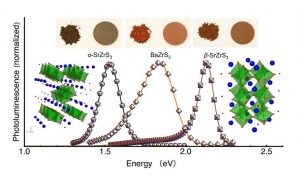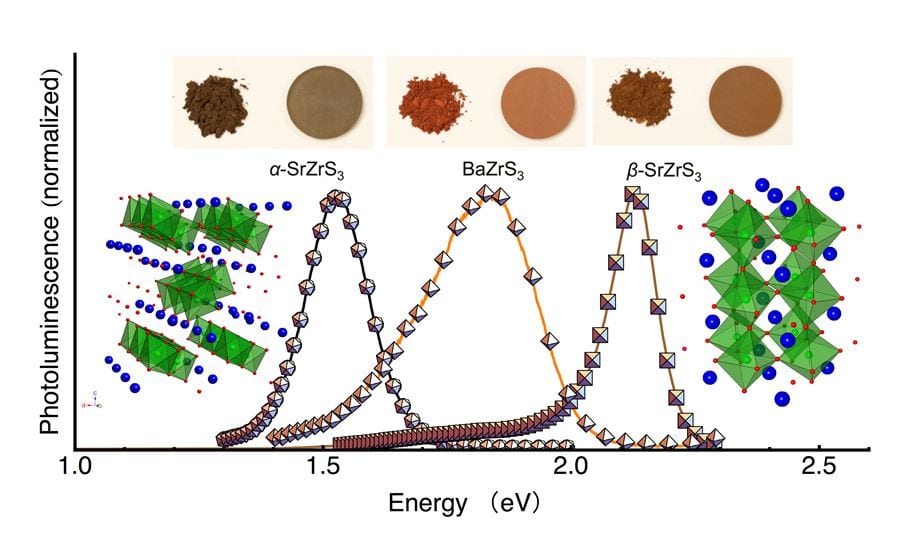Perovskite oxides are an important class of functional materials that have been studied for over half a century given their exotic electronic and magnetic properties. The transition-metal d-band in these materials gives rise to a large density of states. Their large bandgaps (>3 eV) lead to a large absorption coefficient at ultraviolet wavelengths, but they remain transparent in the visible region. Recently, organic/inorganic hybrid perovskites have attracted enormous attention due to their extraordinary photovoltaics performance; nonetheless, they suffer from inherent stability and toxicity issues. These developments have inspired the push for rational design of new stable perovskite materials composed of benign and Earth-abundant elements, while retaining the appealing structural and optoelectronic characteristics.

Photoluminescence spectra and optical images of synthesized powders and pelletized samples for α-SrZrS3, β-SrZrS3, and BaZrS3. More here.
Transition-metal perovskite chalcogenides (TMPCs) are proposed by a team from the University of Southern California, Los Angeles, and the University of Missouri, Columbia, led by Jayakanth Ravichandran, as a new class of semiconductors for optoelectronic applications. The replacement of oxygen with sulfur in the perovskite oxide structure lowers the bandgap to the visible region, and presumably can increase the mobility due to weaker electron–phonon interactions. Several high-quality polycrystalline TMPCs are synthesized in this work by way of an ingenious iodine-catalyzed solid-state reaction in sealed ampoules. The tunability of the optical properties is also demonstrated, especially the bandgap, through chemical and structural control in the design space. The potential of TMPCs for photovoltaics was evaluated via luminescence-efficiency measurements, and the luminescence intensity of one of the materials approaches levels of single-crystal InP and CdSe.
These results suggest that the underexplored ternary sulfide perovskites could be a promising class of semiconductors with broad tunability and superior optoelectronic performance and highlight TMPCs as promising candidates for photovoltaics, thermoelectrics, and optoelectronic applications in general.
This article was kindly provided by Dr. Jayakanth Ravichandran of the University of Southern California, Los Angeles, CA, USA.

















